Kimono Chronicles: Appreciating Japanese Design from Outside In
My Personal Journey with Kimono Design Principles
Hi lovely readers! After the warm responses to last year's Javanese Batik Storytelling series, I'm delighted to return with another 3-part exploration for AAPI Heritage Month. This year, I'm sharing my ongoing exploration with Japanese kimono design and how it has influenced my creative practice.
What began as admiration for traditional craftsmanship evolved into a deeper appreciation for how kimono serves as both identity expression and highly adaptable and artistic storytelling vehicle. Let’s jump into the first part of the series, which chronicles my journey appreciating this wearable art form through a respectful, non-Japanese perspective. This issue will undoubtedly exceed the email length limit, so check it out directly on your Substack app for the most seamless reading experience.
Growing up with Japanese Culture Fascination
My first contact with Japanese culture began when I was really young, perhaps around 5 years old. It started with Japan’s animated TV series.
Watching Doraemon every Sunday at 8am was a ritual, followed by Candy Candy.
This was an era where Indonesia received a great influx of cultural influences in digital entertainment. Japanese animation and drama series, Kantonese / Chinese kung fu series, as well as American TV series and movies seemed like they were suddenly widely available. At least that’s how it felt.
As a child, I got attached quickly to Japanese anime and manga, to the point that I started learning Japanese language as a hobby when I was barely 4 years old.
The greatest hits of Saint Seiya, Sailor Moon, Ranma 1/2, City Hunter marked the beginning of a long-term obsession fascination, which continues to works like Shurato, The Rose of Versailles, Mobile Suit Gundam Wing, Rurouni Kenshin, Glass Mask, Magic Knight Rayearth, and many more.
When I was a teenager, I started playing PlayStation, and another chapter of fascination with Japanese Role Playing Games began. The biggest series that I still follow to this day (and still survive to this day) is the Final Fantasy series.
Discovering Kimono and Appreciating Japanese Designs
Throughout this continued exposure to popular media, I became more immersed in curiosity about all aspects of Japanese aesthetics and traditions. More importantly, I constantly observed the diverse and innovative approaches of storytelling through what the characters wear.
The Japanese excel at both preserving their cultural and design aesthetics, as well as adapting elements from other cultures to create distinctly Japanese interpretations. Even Americana style in Japan is very Japan-coded. I found this really fascinating and as a result, this understanding translates into how I incorporate Japanese designs into what I wear, especially the kimono.
The kimono (着物), which literally means "thing to wear,” has a fundamental place in more than one thousand years of Japanese history. It originates from paofu, traditional Chinese garment with wide sleeves, wrap-around front, and floor-length hemline.
Popular during the Han Dynasty (202 BC – 9 AD, 25–220 AD), it is the original garment inspiration not only for Japanese kimono, but also for Korean dopo.
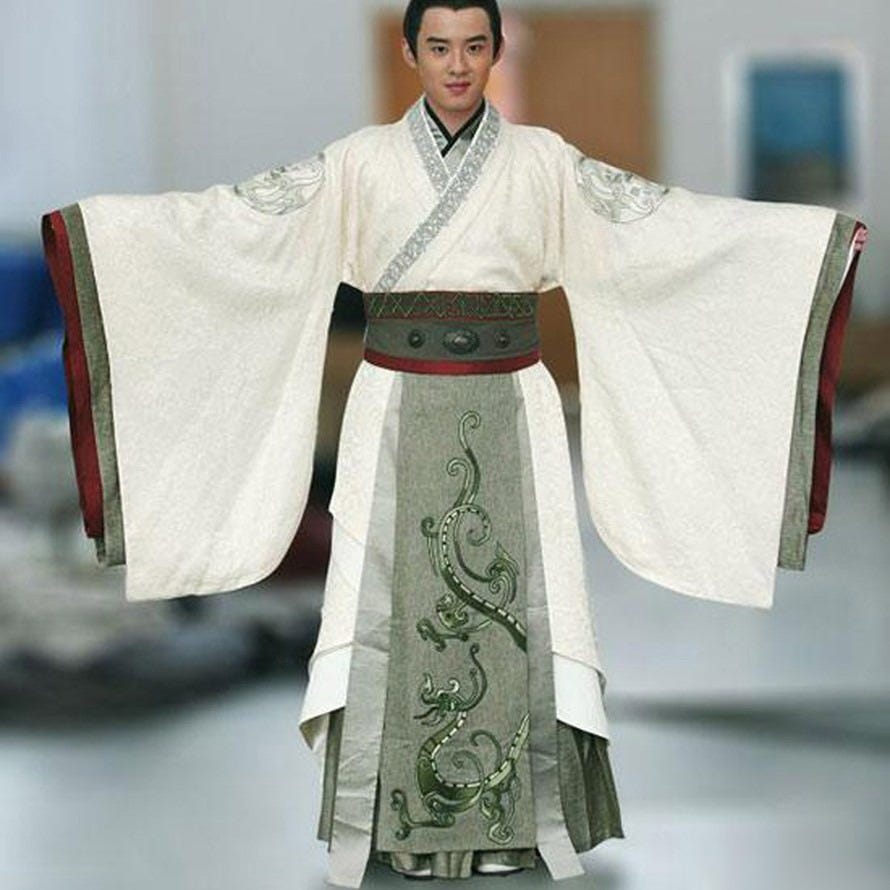
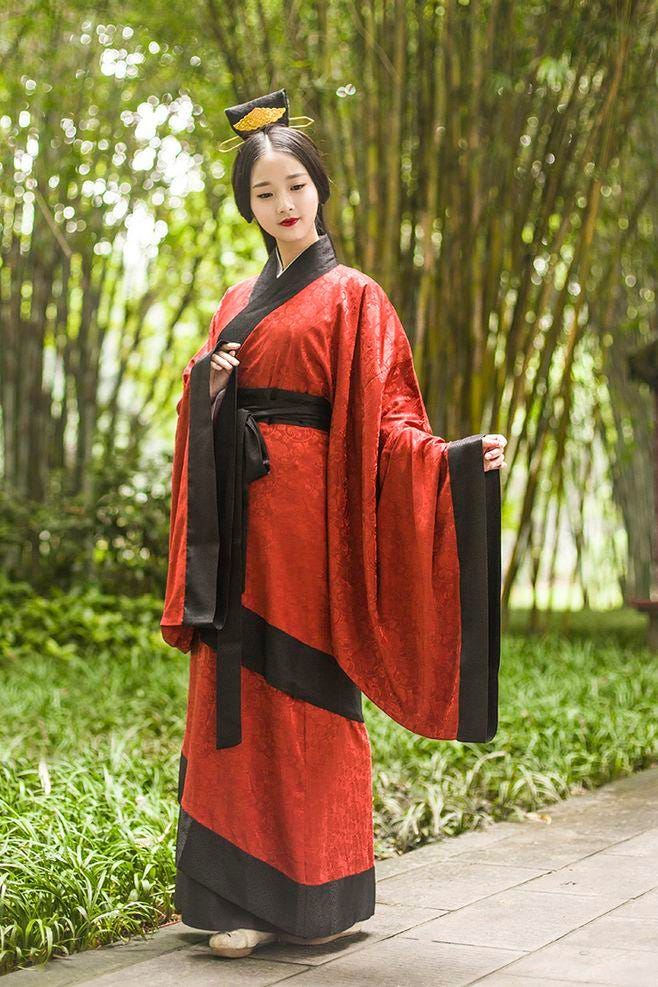
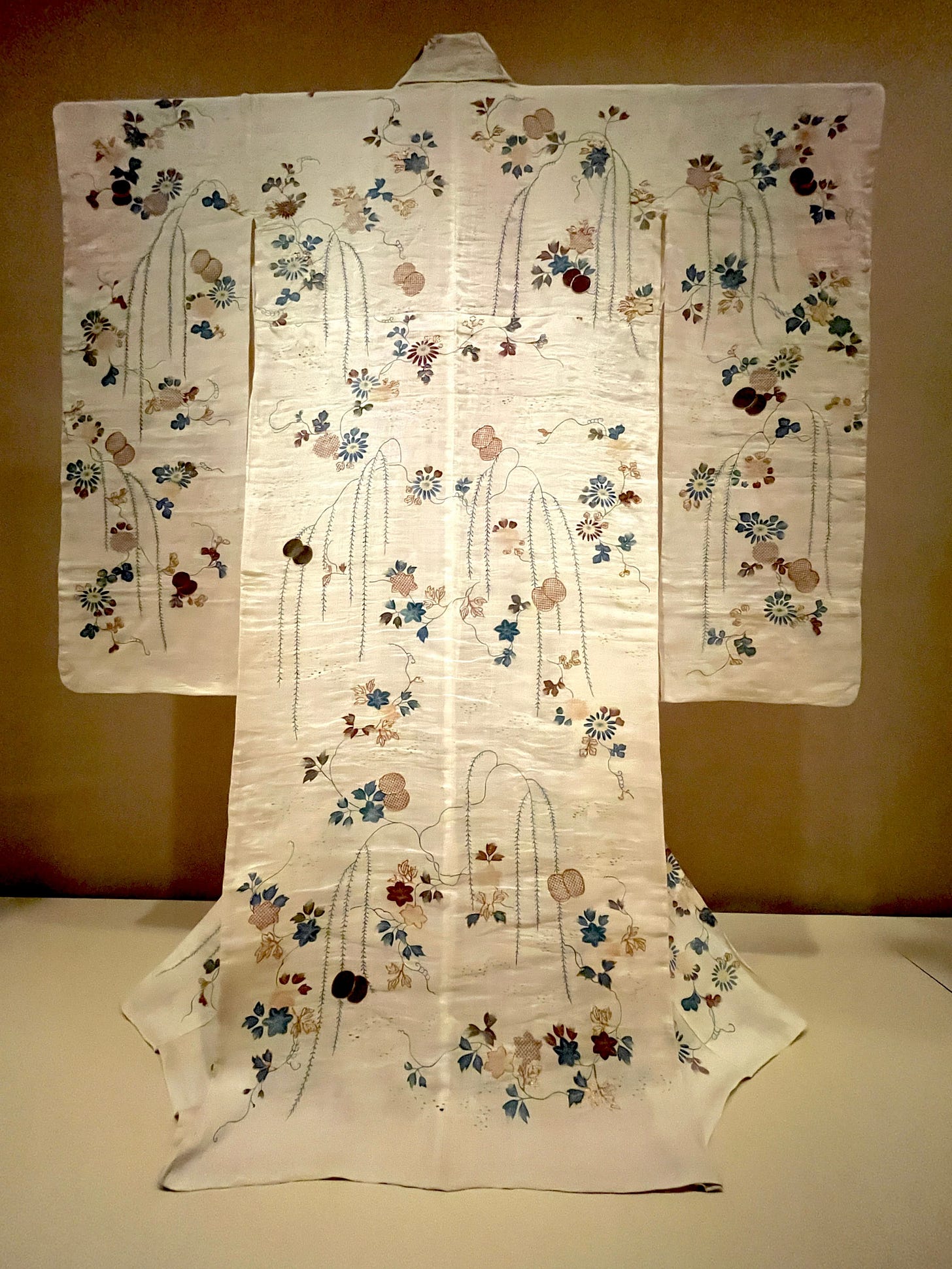
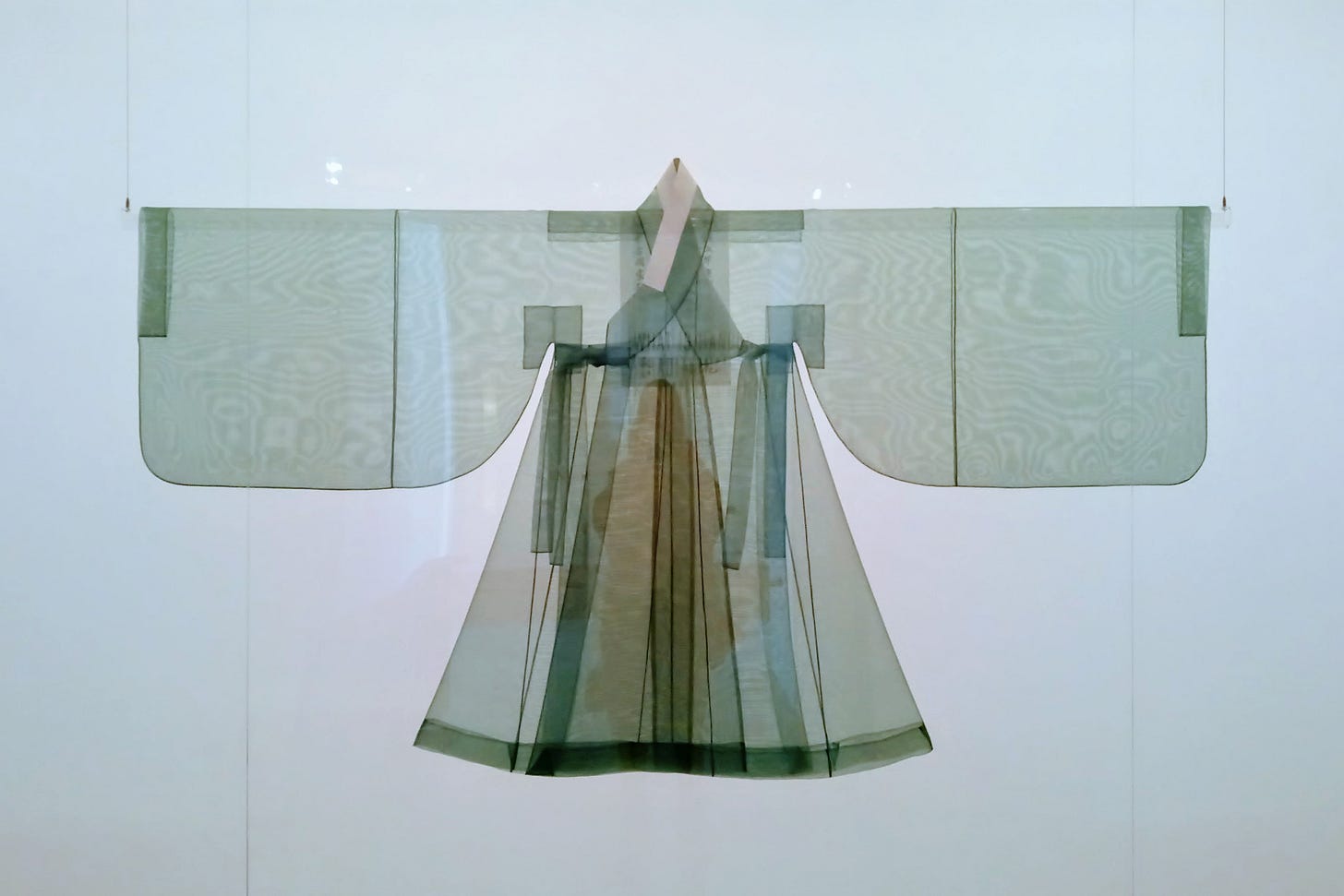
This garment design, with wrap-around front overlap, long sleeves, and floor-length hemline is also popular in other cultures. Tibet’s national garment chupa is not only beautiful with its colorful motifs, but also highly functional in protecting its wearer against the Himalayas’ high altitude and cold temperatures.

Encountering Japanese Kimonos in Museums
As one with both Indonesian and Chinese ethnic origins, the common theme of long panels of cloth that wrap around the body becomes more interesting as time passes. To this day, those are design elements that I naturally gravitate towards.
The Japanese kimono is the most accessible and available source of these design elements for me. Finding vintage Japanese kimonos for an affordable price in the San Francisco Bay Area in the mid 2010s was relatively easy, so I bought several to collect, appreciate, and examine up close. The zero waste design principles and exquisite craftsmanship that go into each kimono always put me in a blissful state of awe.
Because of that, studying the wearable art of kimono has become one of my favorite things to do. Whenever I am able, I make time to go to museum exhibitions that feature Japanese kimonos. One of my favorites is Met Museum’s Kimono Style: The John C. Weber Collection Exhibition (2022 - 2023). This exhibition deepens my appreciation of this wearable art, and inspires me to explore more intersections of cultures in my own design work.
Luckily for you, readers, I took a pretty good amount of pictures from the John C. Weber exhibition. Let’s take a look! First up, a white over robe that was worn by a wealthy merchant-class bride in the 19th century. Just as it is with Javanese Batik symbolism, every motif and design visualized here have meaning.
*All quotes provided below are transcribed from the exhibition signage.

Fretwork, chrysanthemums, and orchids decorate the ground fabric of this white over robe, which was worn by a wealthy merchant-class bride. It is embroidered with gold bamboo stalks — a symbol of resilience and vitality — that reach from the hem to the neck. Another embroidered and tie-died motif on the robe represents noshi, the folded-paper decoration traditionally attached to gifts and sake bottles as a token of good luck. Designed in the shapes of butterflies, these noshi allude to a long marriage.
Their distinctive folds distinguish the insects as male and female, symbolizing the new couple. Several noshi are executed in tiny kanoko (fawn spot) tie-dyeing, an expensive, labor-intensive technique. Other symbols of longevity, such as turtles, pines, cranes, and plum blossoms decorate them.
Textile art exhibitions like this are opportunities to learn more about humanities and our connections to each other, although we are separated by countries, cultures, and many other boundaries (real or imagined). Collected treasures like these allow us to observe the artist’s stories and messages they’d like to imbue onto their creations.

Branches of a leafing willow trail down this over robe, which was originally the kosode of a wealthy merchant woman. Semicursive Chinese characters, rendered in orange-red silk embroidery and couched gold threads, read, on the front, 梳 (kushikezuri, to comb), 柳 (ryū, willow), and 気 (ki, weather); on the back, from right to left, 鬚 (hige, whiskers), 霽 (harete, to clear), 風 (kaze, wind), and 新 (shin, new). Before the garment was altered, the characters were ordered as a ninth-century poem written in Chinese by a Japanese courtier, Miyako no Yoshika.
Ki harete wa kaze shinryū no kami o kushikezuri, kōri kiete wa nami kyūtai no hige o arau.
The weather clears, breezes comb the hair of the young willows; The ice is melting, wavelets wash the whiskers of the old bog moss.
-translated by J. Thomas Rimer and Jonathan Chaves
During the exhibition, I saw firefighter’s ensemble for the first time. It’s so rare to see one, let alone several at once. These were worn by townsmen firefighters who served in Edo’s business and residential areas. “Their reversible coats were made of several layers of thick cotton fabric quilted with sashiko stitching (a running stitch of “small stabs”). The inner layer was decorated with elaborate designs often inspired by popular contemporary woodblock prints of warrior-heroes and mythical creatures that instill bravery or are related to water. This jacket’s interior (shown reversed) features a scene popular in Kabuki and based on a print by Utagawa Kunisada (1786-1865) in which the warror Yoshikado asks a frog sage for magical powers to avenge the murder of his father. Yoshikado holds his family banner, patterned with a tethered black horse. The subject signifies a heroic and honorable confrontation with death, suitable for such a garment.”
On the left: Fireman's Jacket (Hikeshi-banten) with Shogun Taro Yoshikado, Edo period (1615-1868), mid-19th century. Quilted cotton with tube-drawn paste-resist dyeing (tsutsugaki) with hand-painted details.
On the right: Fireman's Jacket (Hikeshi-banten) with Chinese Warrior, Edo period (1615-1868), mid-19th century. Quilted cotton with tube-drawn paste-resist dyeing (tsutsugaki) with hand-painted details.
What made it extra special was observing the vibrant red ensemble that’s reserved for the samurai women.
On the left: Daimyo Firefighter's Ensemble (Kaji shōzoku), Edo period (1615-1868), first half 19th century. Wool (rasha).
On the right: Daimyo Firefighter's Ensemble (Kaji shōzoku) for Samurai Women, Edo period (1615-1868), first half 19th century. Wool (rasha) with satin-weave silk appliqué and silk-and-gold-thread embroidery.
The luxurious red wool (rasha) jacket worn by a high-ranking samurai woman on fire duty is extravagantly decorated with crashing waves, water droplets, and anchors. The dynamic composition refers to the processes of extinguishing a fire and pulling down smoldering buildings and also symbolizes security. The quality of the gold-thread embroidery is excellent, with various gold couching techniques and French knots on the tassels, which are attached to the cords of the anchors. Five crests with a motif of three oak leaves, possibly the Yamauchi family crest, are depicted on the jacket. The hood (zukin) indicates that this set was made for a woman, as male firefighters wore helmets. A matching plastron, or breastplate, and hakama pants would have completed the ensemble. High-ranking samurai women, especially those living in the women's quarter of Edo Castle, were trained to evacuate and assist people during fires. They carried spears (naginata) to defend the fleeing occupants (mainly other women) and patrolled the grounds.
Seeing this vibrant vest really speaks to me as an upcycler, who is used to combine together irregular pieces of fabric to create a patchwork textile.
And this summer kimono with turbulent waves feels modern, fresh, yet intense. It reminds me of Javanese Batik’s parang motif, which is theorized to be originated from seeing intense waves crashing the coral rocks on the beach.
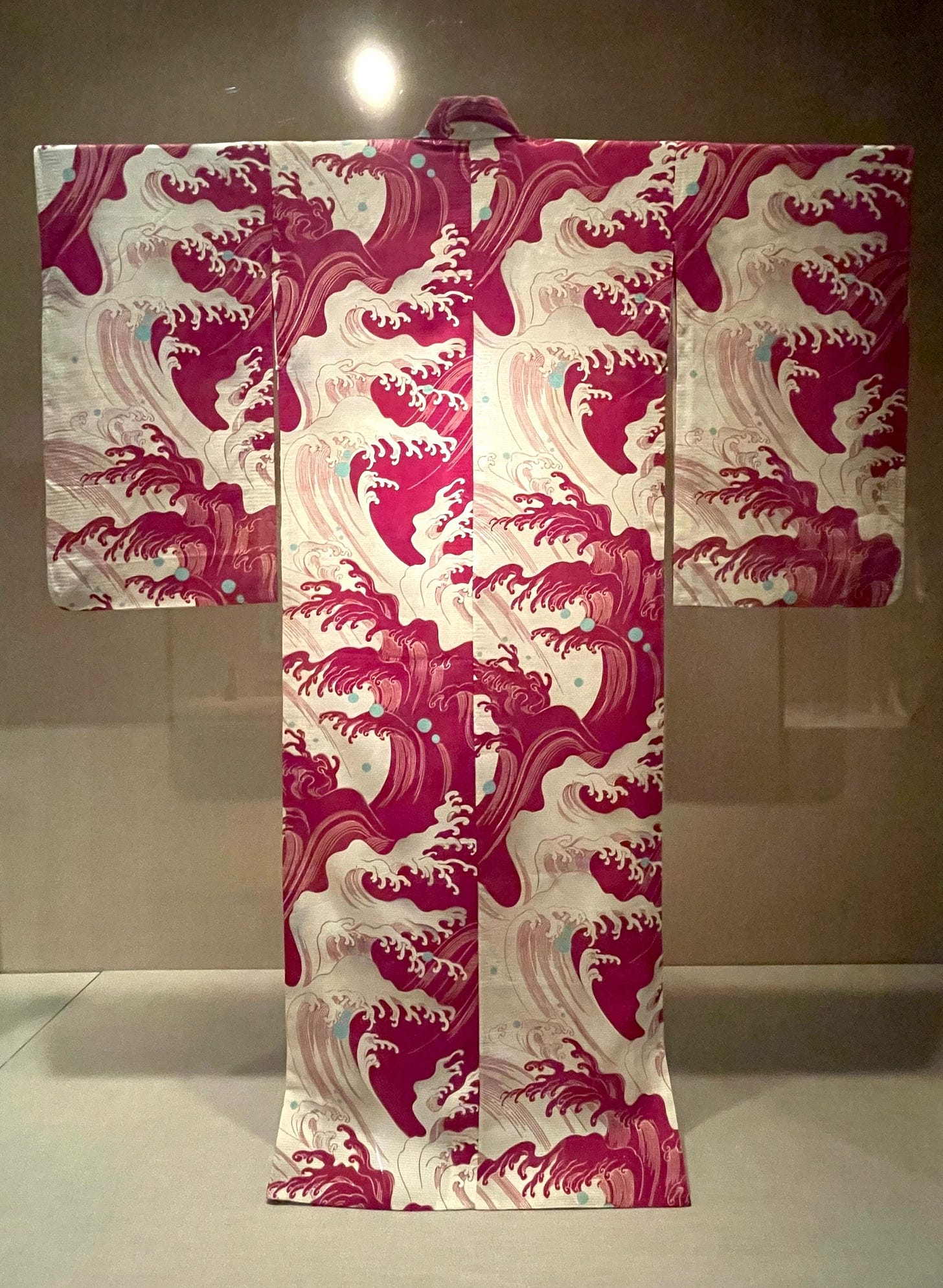
Waves were a major theme in Japanese painting and prints and the subject of the archipelago's most iconic artwork, The Great Wave, by Katsushika Hokusai (1760-1849). The playful design on this unlined gauze- or ro-weave summer kimono modernizes that print's turbulent waters by depicting only the foaming swells and splashing blue droplets. The weaving technique creates an airy fabric with fine stripes of openwork.
Japanese Kimono Influence in Western Garments
At the same exhibition, I also got to see global influence of kimono in Western garments. These are my favorites - exploring silhouettes, textures, and visual accents through design motifs and prints.

Dressing with Kimono Design Elements
In my journey of appreciating and studying Japanese kimono design, I didn’t start working with kimono directly until very recently. Throughout the years, I tend to observe, explore, and learn more about incorporating kimono elements into what I wear.
Below are pictures of some of the books and literature I have. I want my understanding to be quite diverse and applicable to how I translate kimono into what I wear and how I work with them.

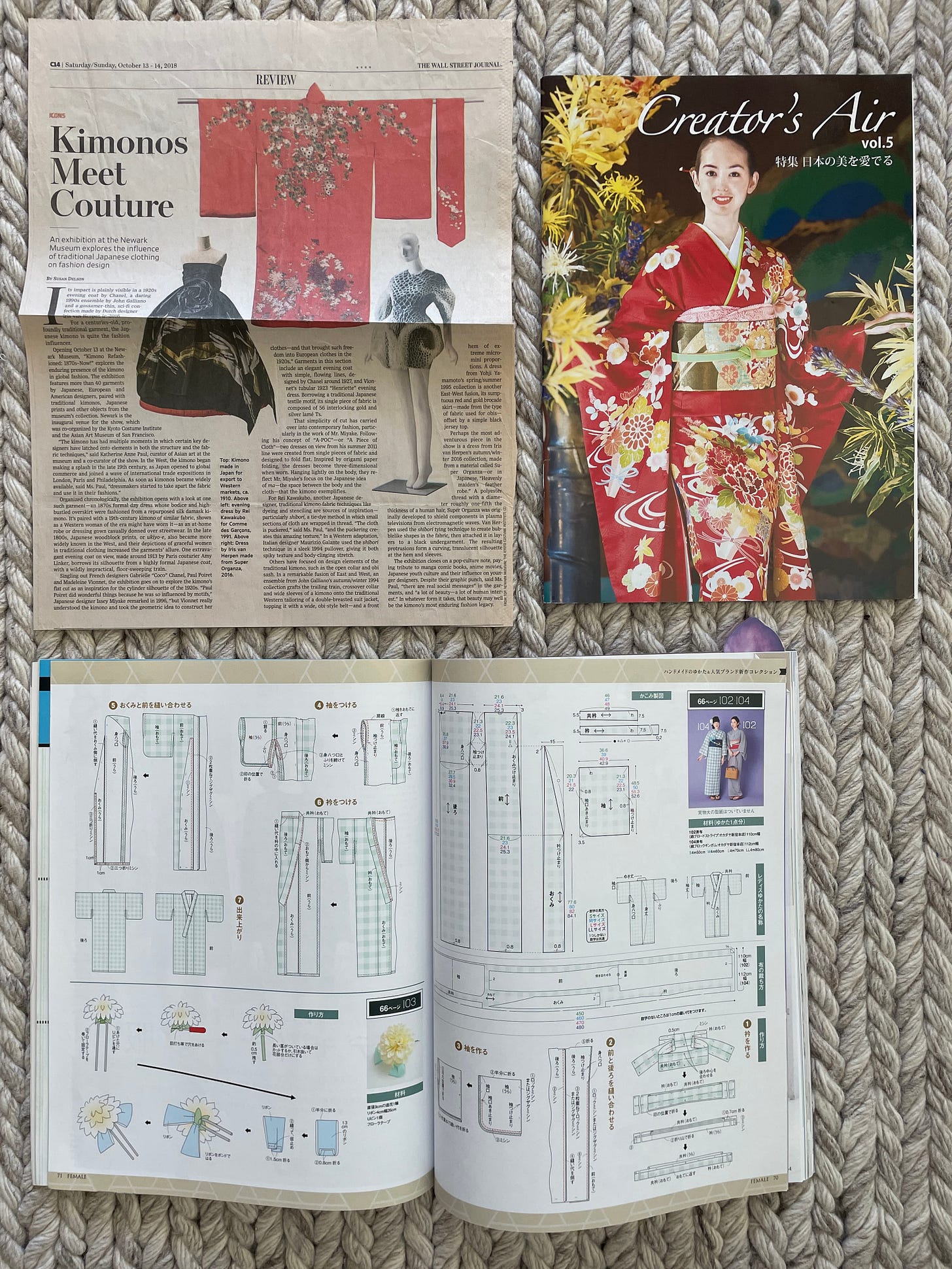
I started incorporating kimono elements more meaningfully in my wardrobe about 10 years ago. Sou Sou is my go-to brand for acquiring such modern Japanese pieces, and this wool jacket is my favorite.
I obviously love polkadot, especially if they are black and white. The pants below are also from Sou Sou.
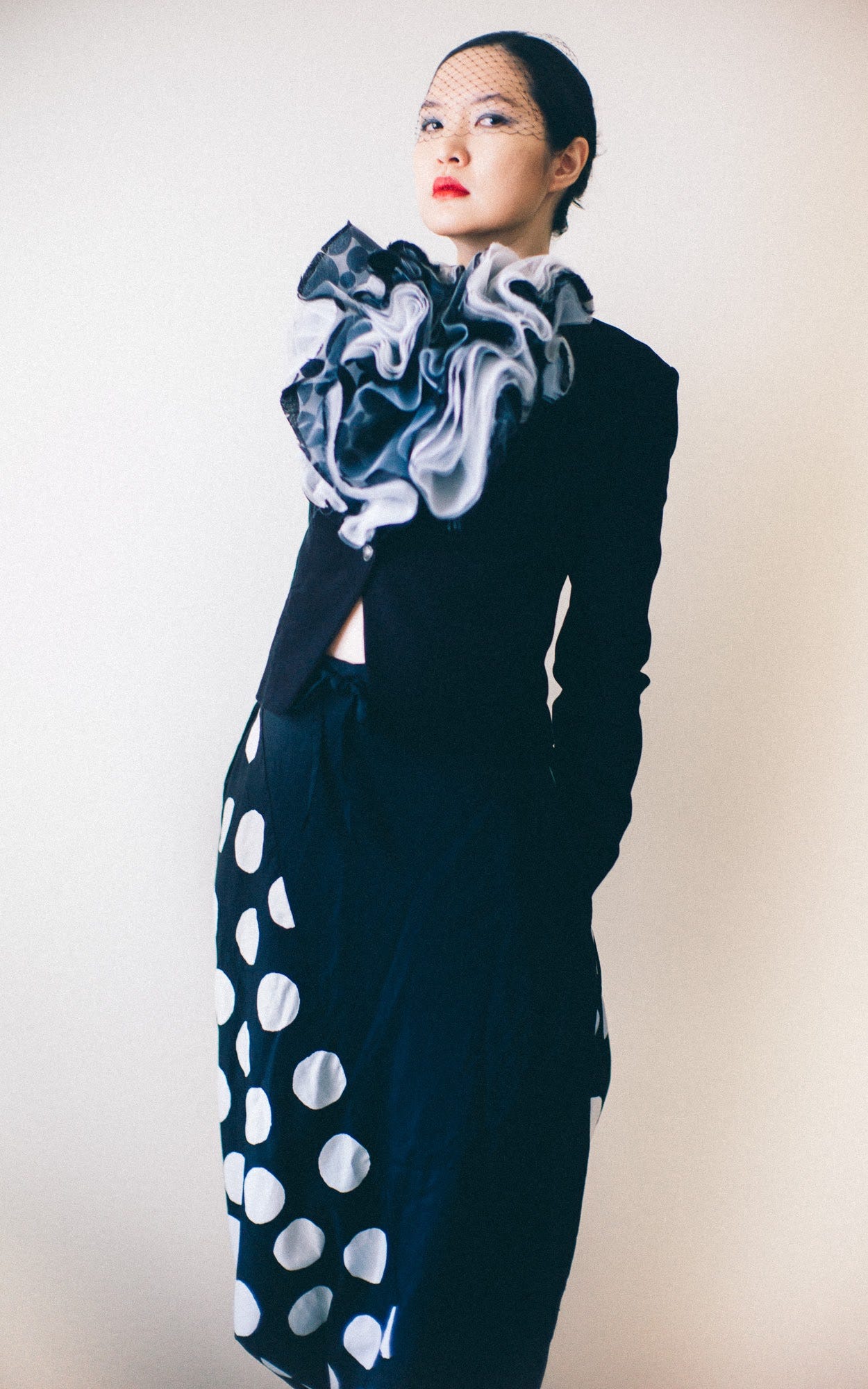
Another ensemble featuring Sou Sou pants, as well as a vintage brown Comme des Garçons vest.
I don’t find it easy to wear Japanese kimono easily in my daily wear, especially outside of Japan or the Japanese community. So I try to find other ways to incorporate kimono design elements to my outfit. Sometimes I wear the obi part as a wide belt, alongside its obijime (cord tie) accessory. The kai no kuchi is my favorite obi knot to do. It’s relatively simple and sturdy enough not to get squished easily when I ride a car or sit down on a chair.

Some other times, I did go bold and experiment more by wearing Japanese kimono outside. Most of the time, it replaces the need to wear a long coat, which is my go-to outerwear item. I used to do this most often when the J-Pop Summit festival was happening. Unfortunately, the annual festival abruptly stopped in 2018.
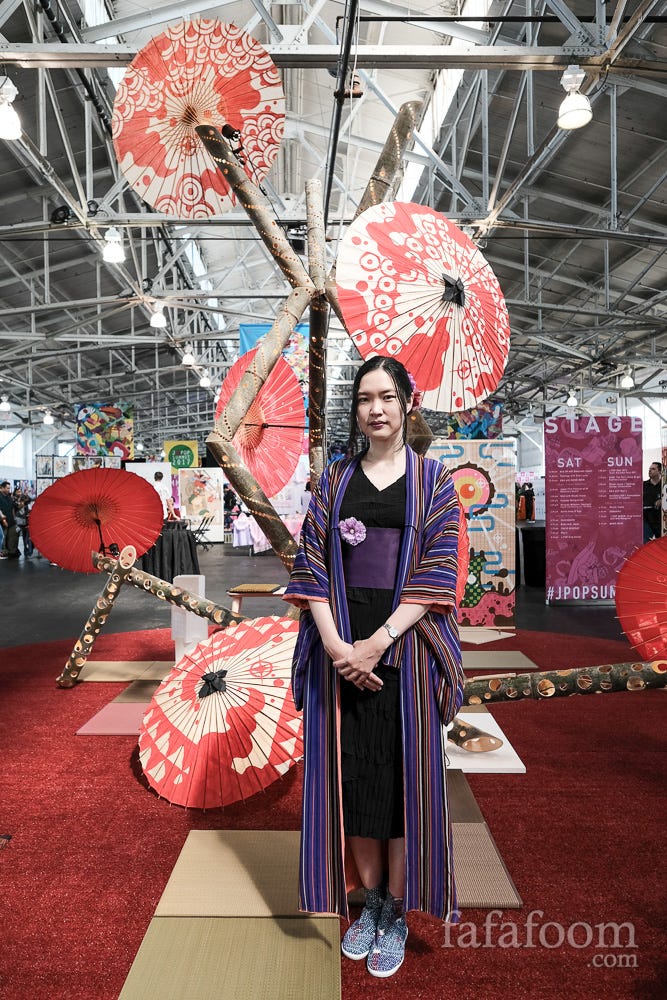
My experiment with Japanese kimono styling continues through at-home photoshoots. With styling help from my good friend and collaborator Jesus Romero, who collaborated with me in creating the ReCollection collection, we created three looks incorporating Japanese kimono in modern styling by dressing my gorgeous friends Audrey, Michelle, and Vero.
Coming Next: Creating Kimono-inspired Jacket using Ghanaian Fabric
My fascination with Japanese kimonos continues to this day. While I don’t wear Japanese kimono much anymore (RIP J-Pop Summit Festival), my appreciation and curiosity continues. Just last month, I was wearing a kimono-inspired jacket during Rethink the Runway’s Threads of Change Reception.

So in the next article, I will walk you through the process of making the jacket! The pattern has been available for free at SHOW STUDIO’s Design Download since 2004, but I only was able to make one a couple of years ago. Please look forward to it!
Now that we have reached the end of the article, I invite you to share your own experiences with Japanese kimono or other culturally significant textiles in the comments. How have traditional design principles from various cultures influenced your own dressing practices?
Thanks for reading; until next time,
Mira Musank
Additional Sources:
Aculturame: The Tibetan Chuba (2016)
Asian Art Museum Unveils Couture Korea (2017)
Asian Art Museum: Kimono Refashioned (2018)
Fafafoom.com: Japanese Kimono Modern Styling (2018) and Kimono Styling Party (2019)
Folkcostumes.blogspot.com: Dragon robes of Qing Dynasty (2017)
Met Museum’s Kimono Style: The John C. Weber Collection Exhibition (2022 - 2023)


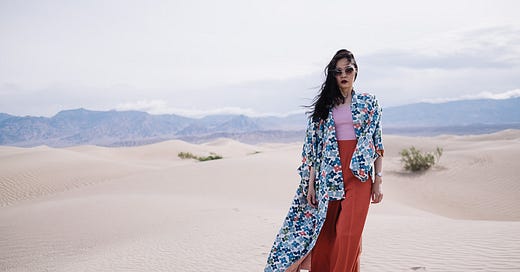



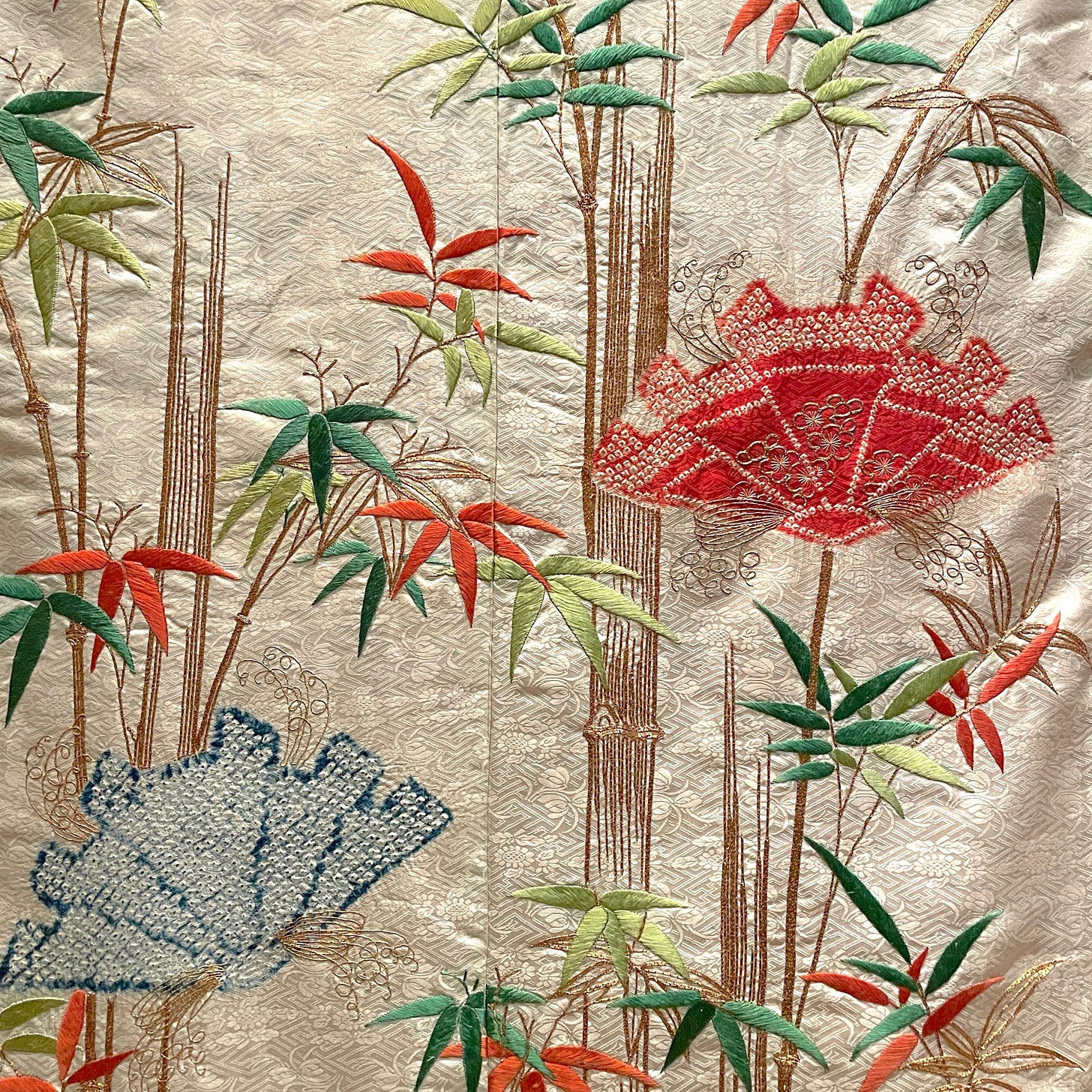
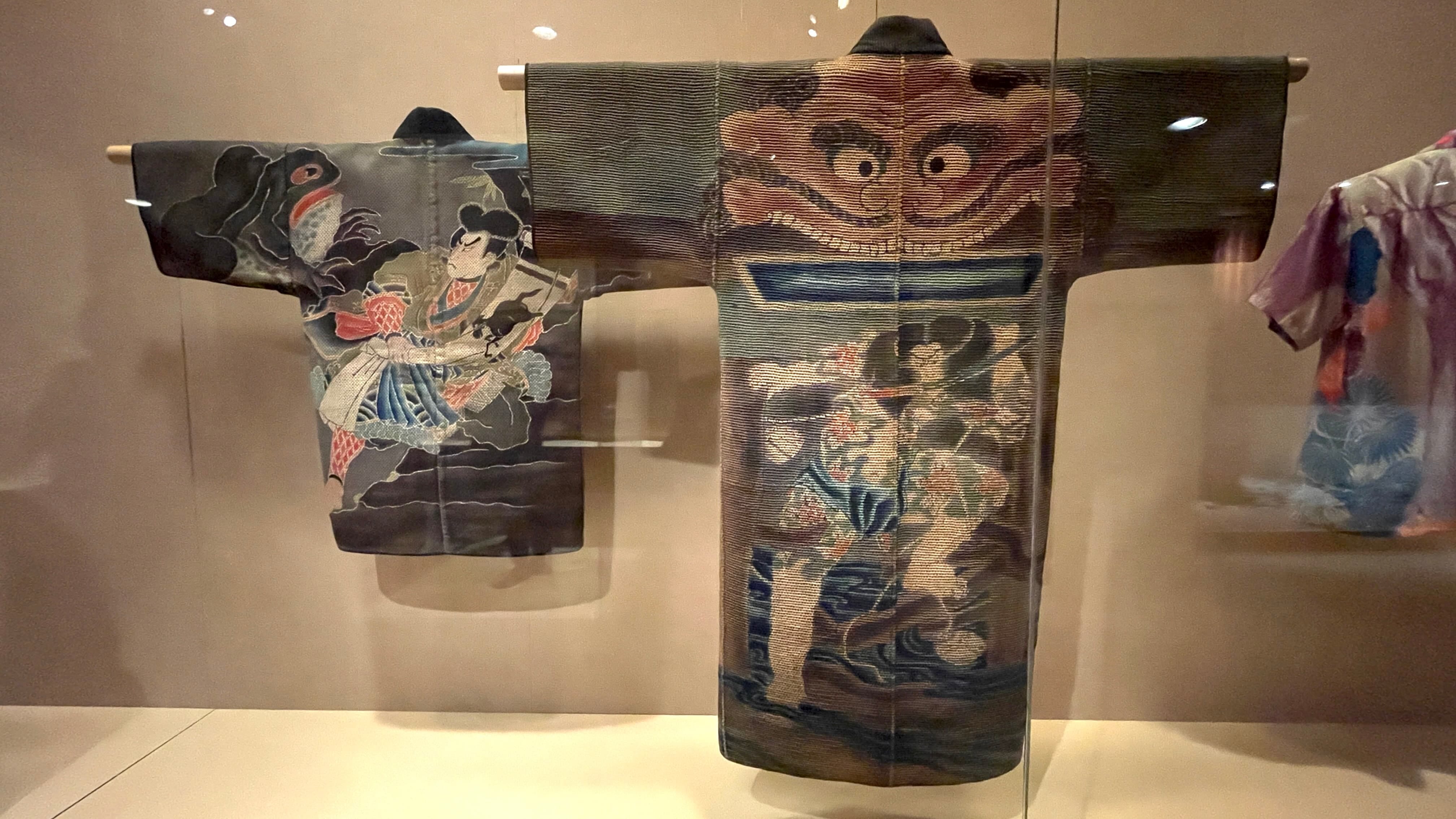
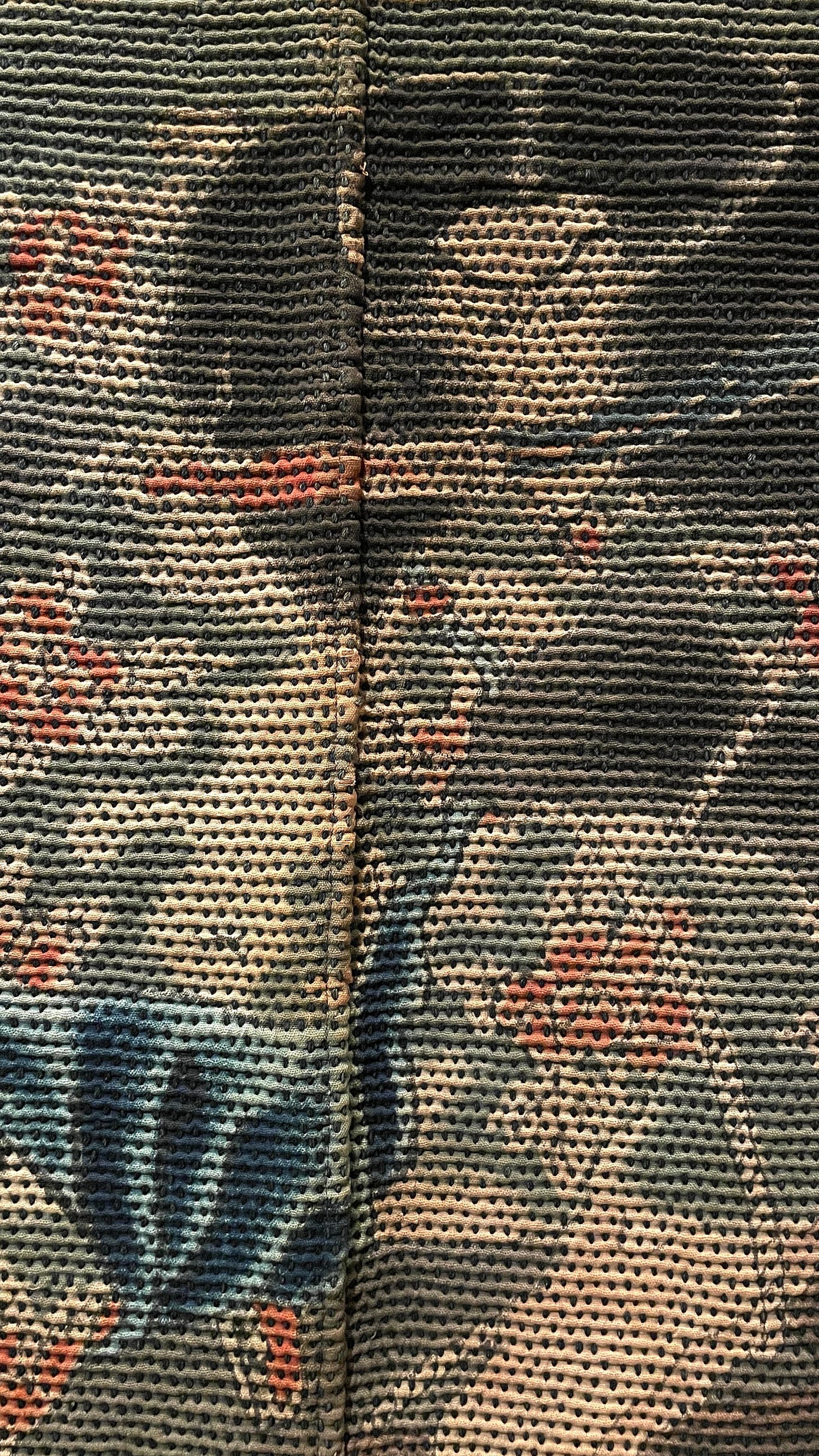


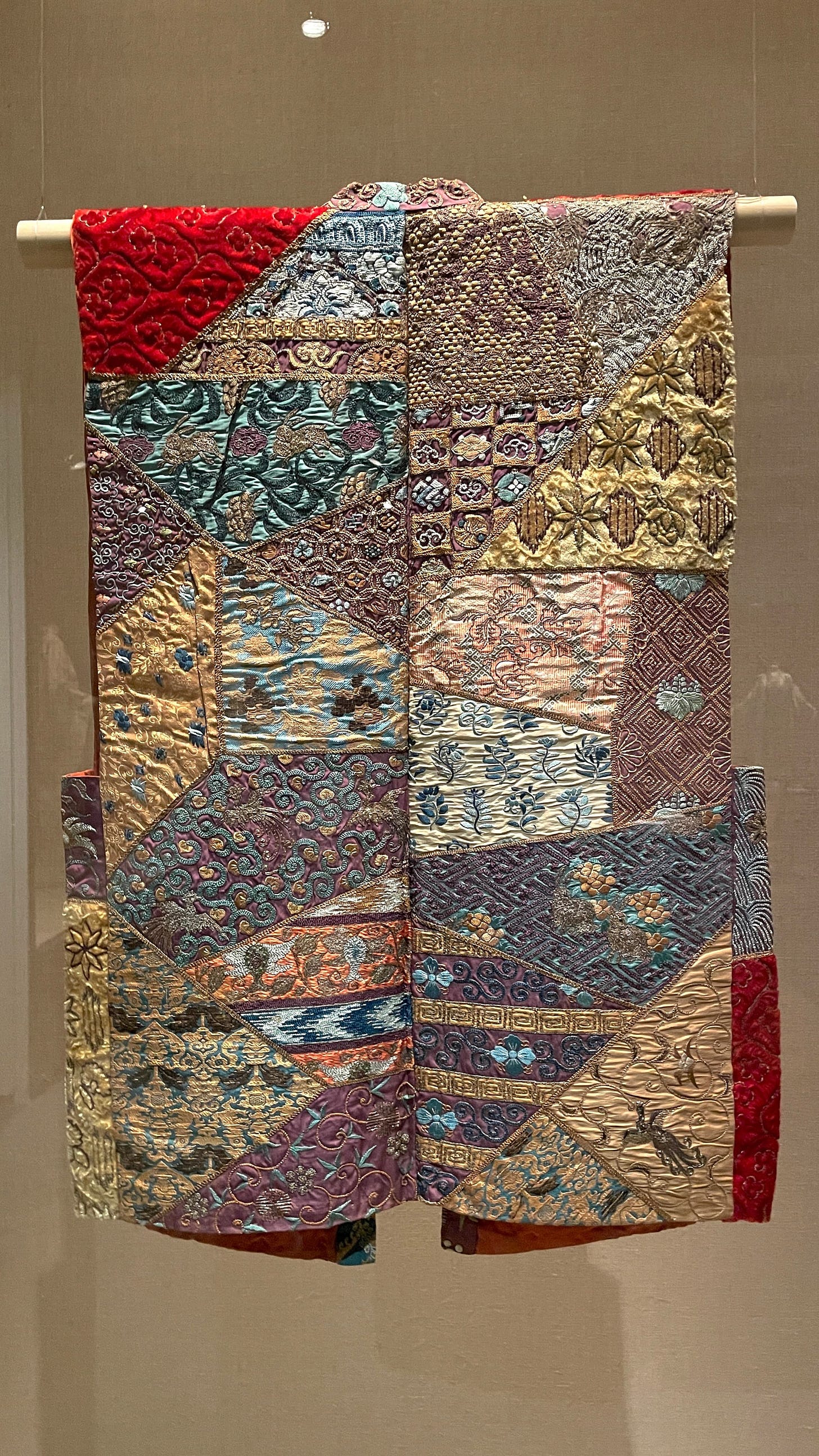
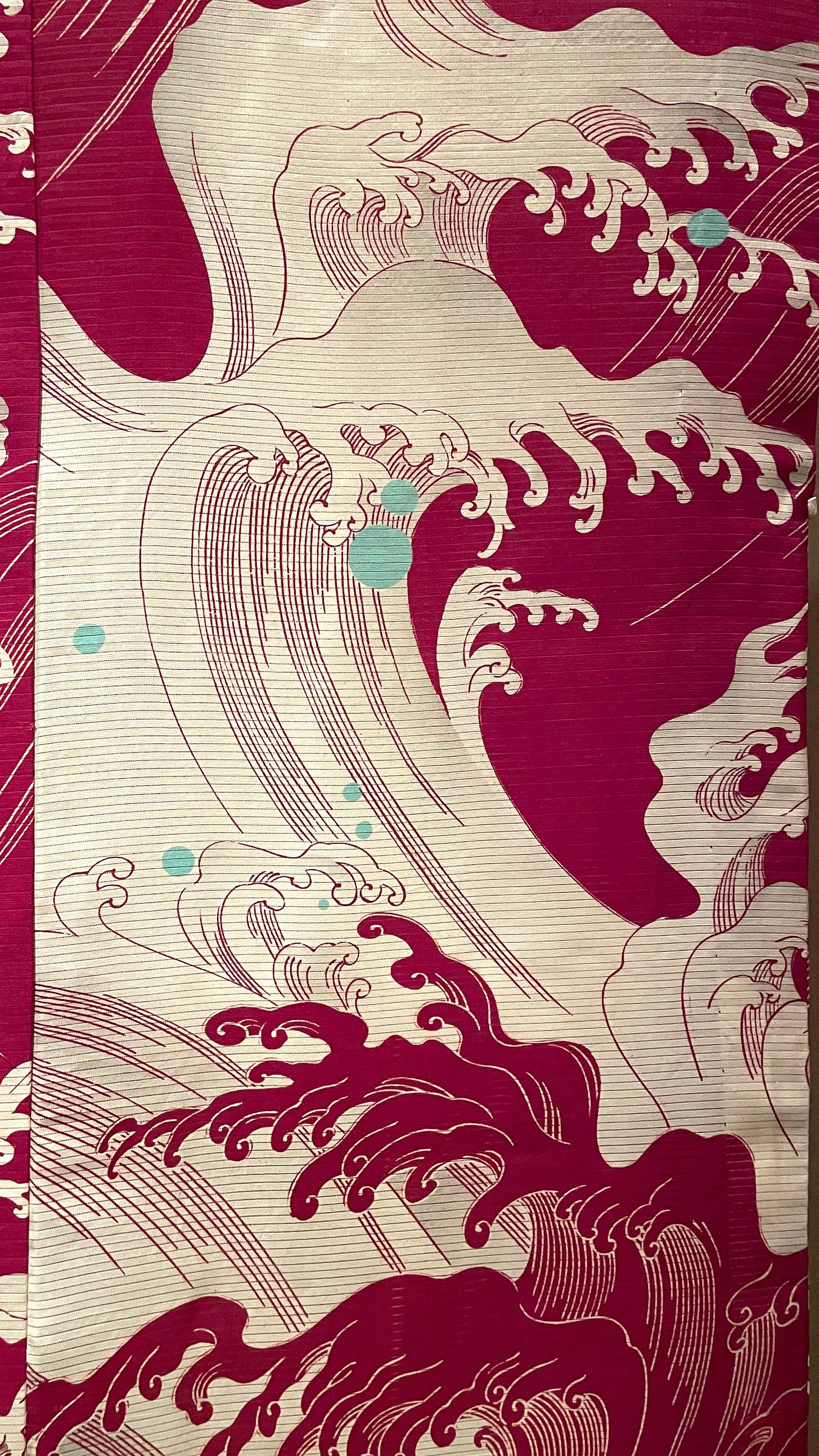


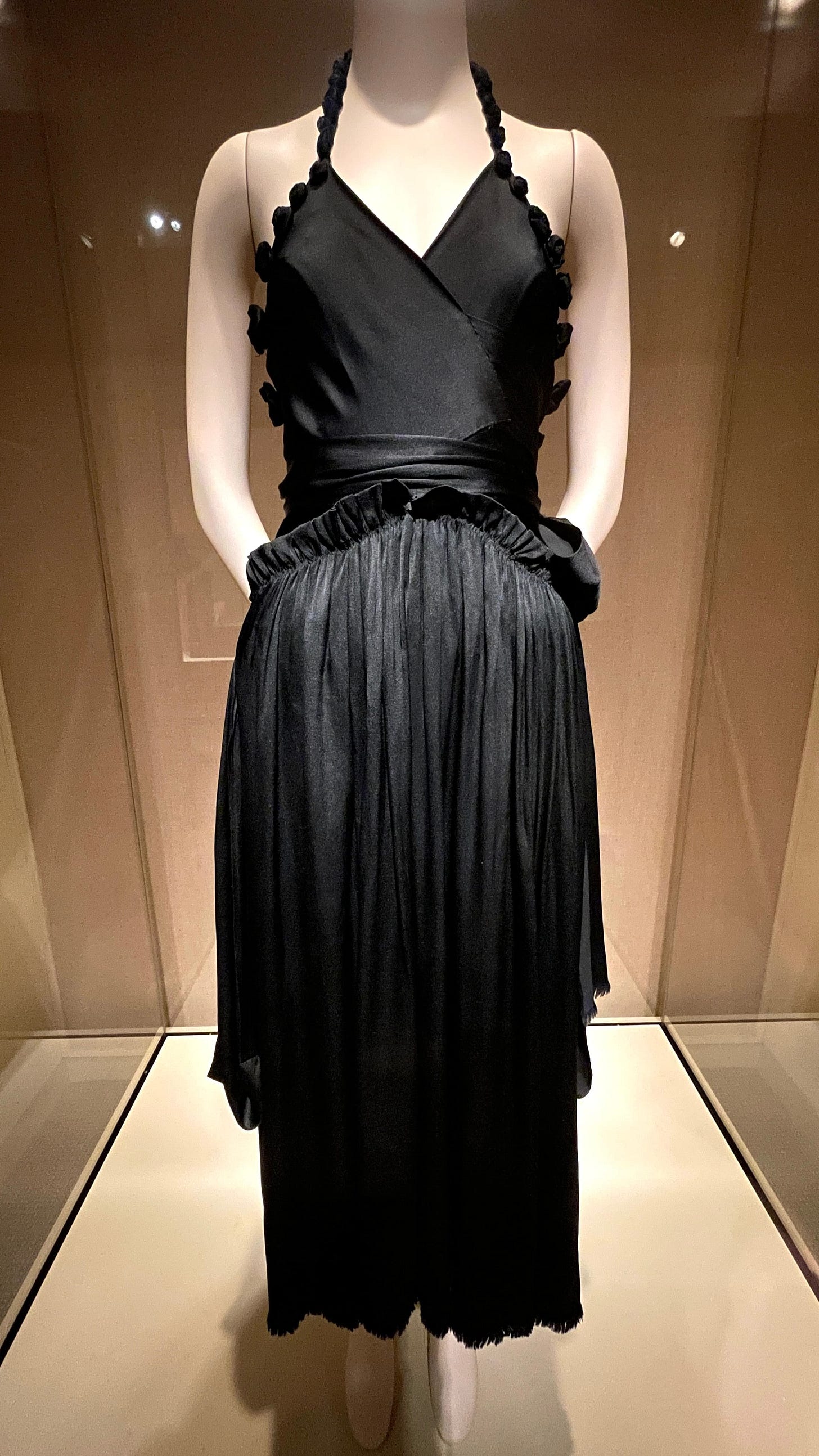

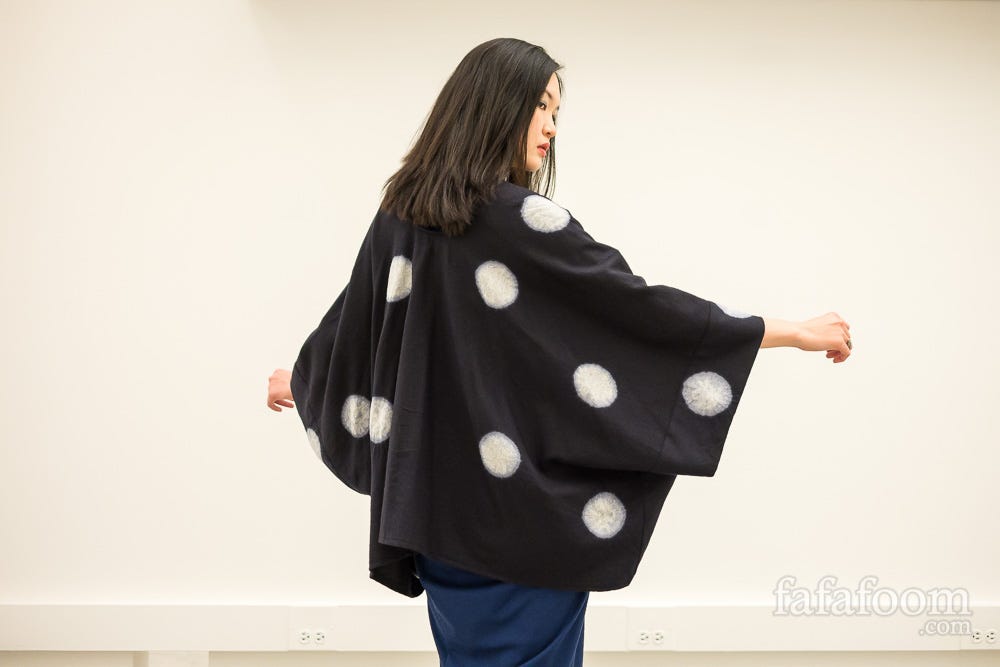

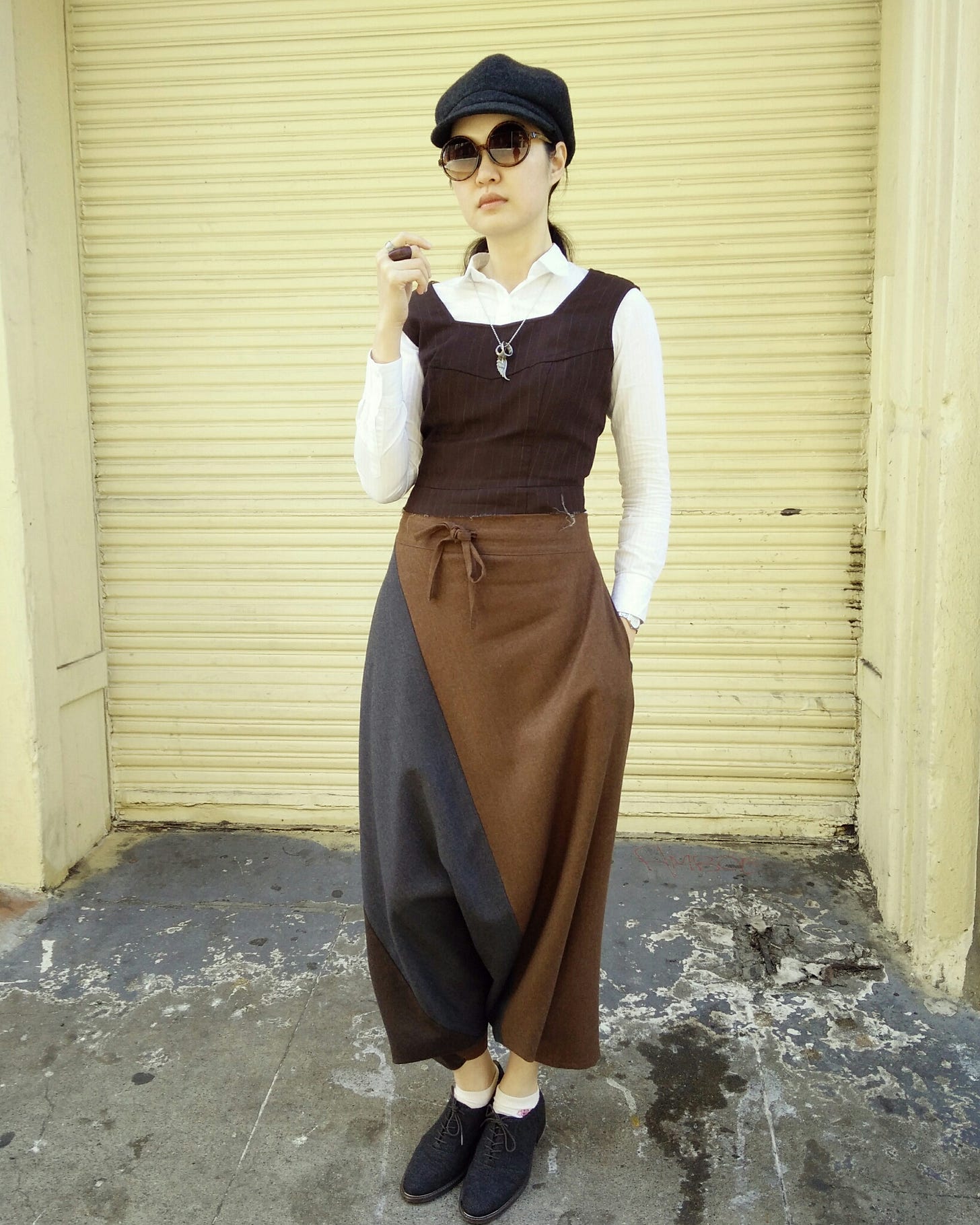

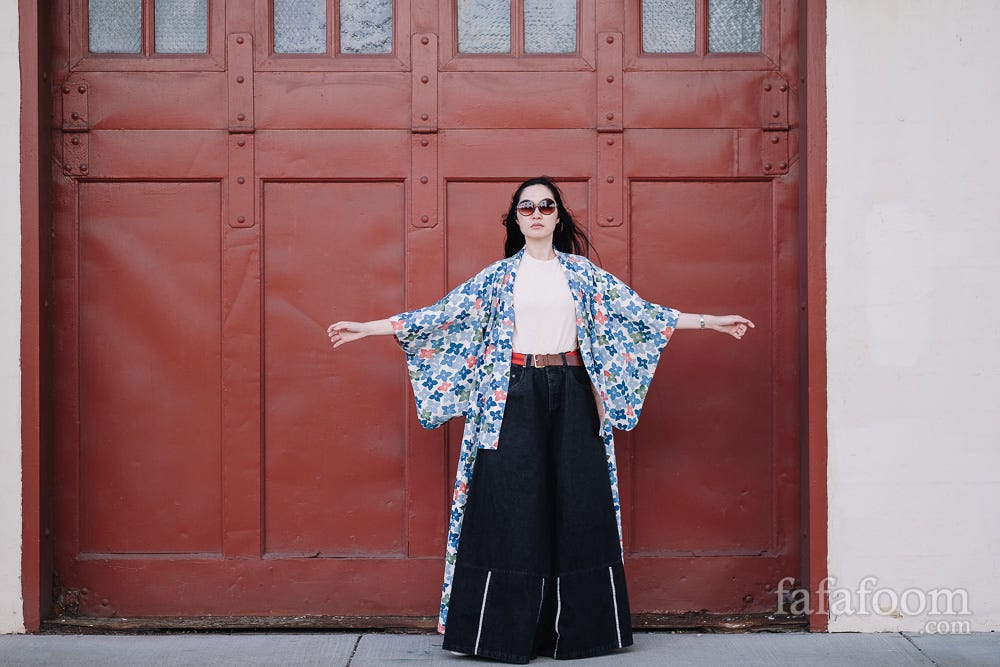
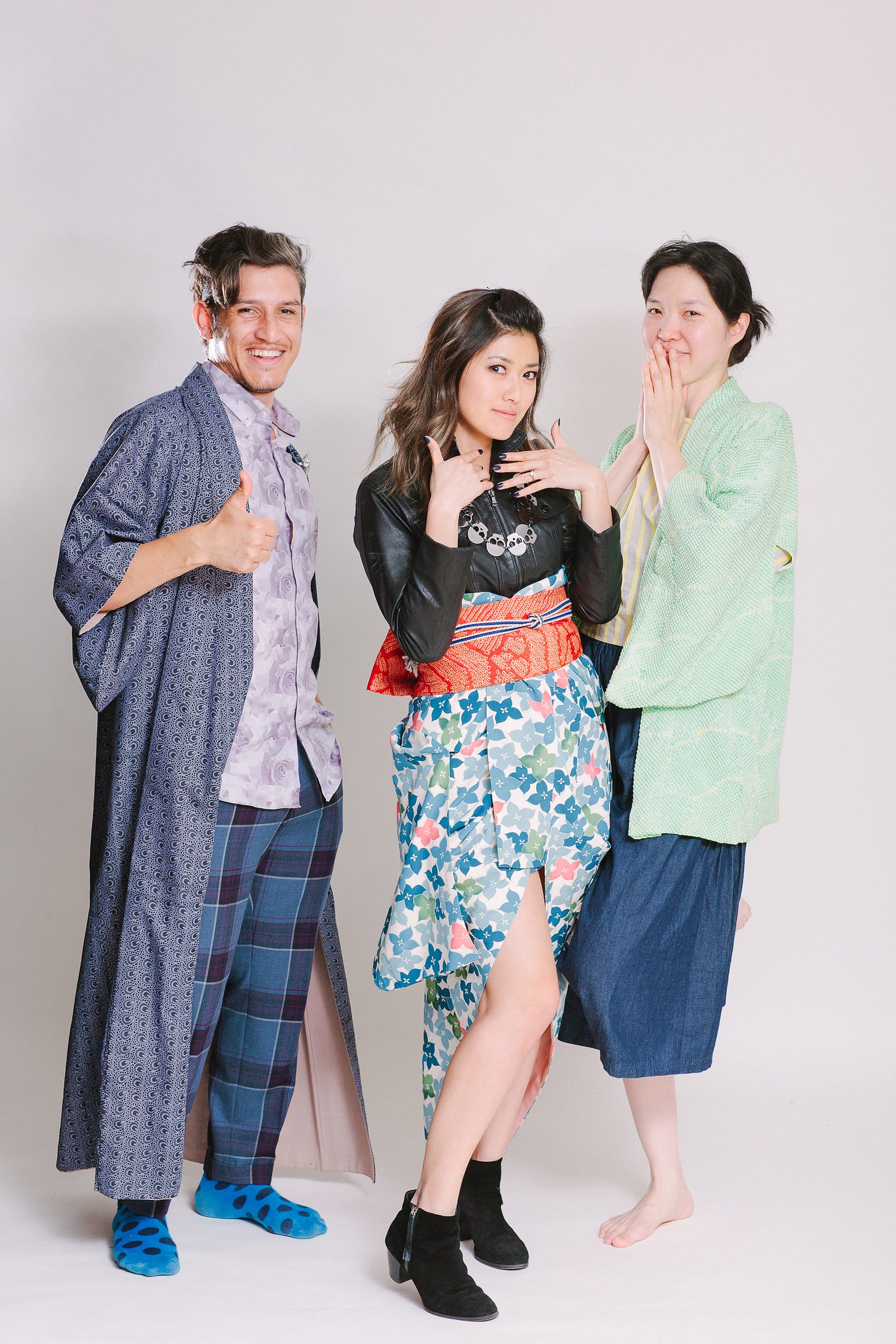
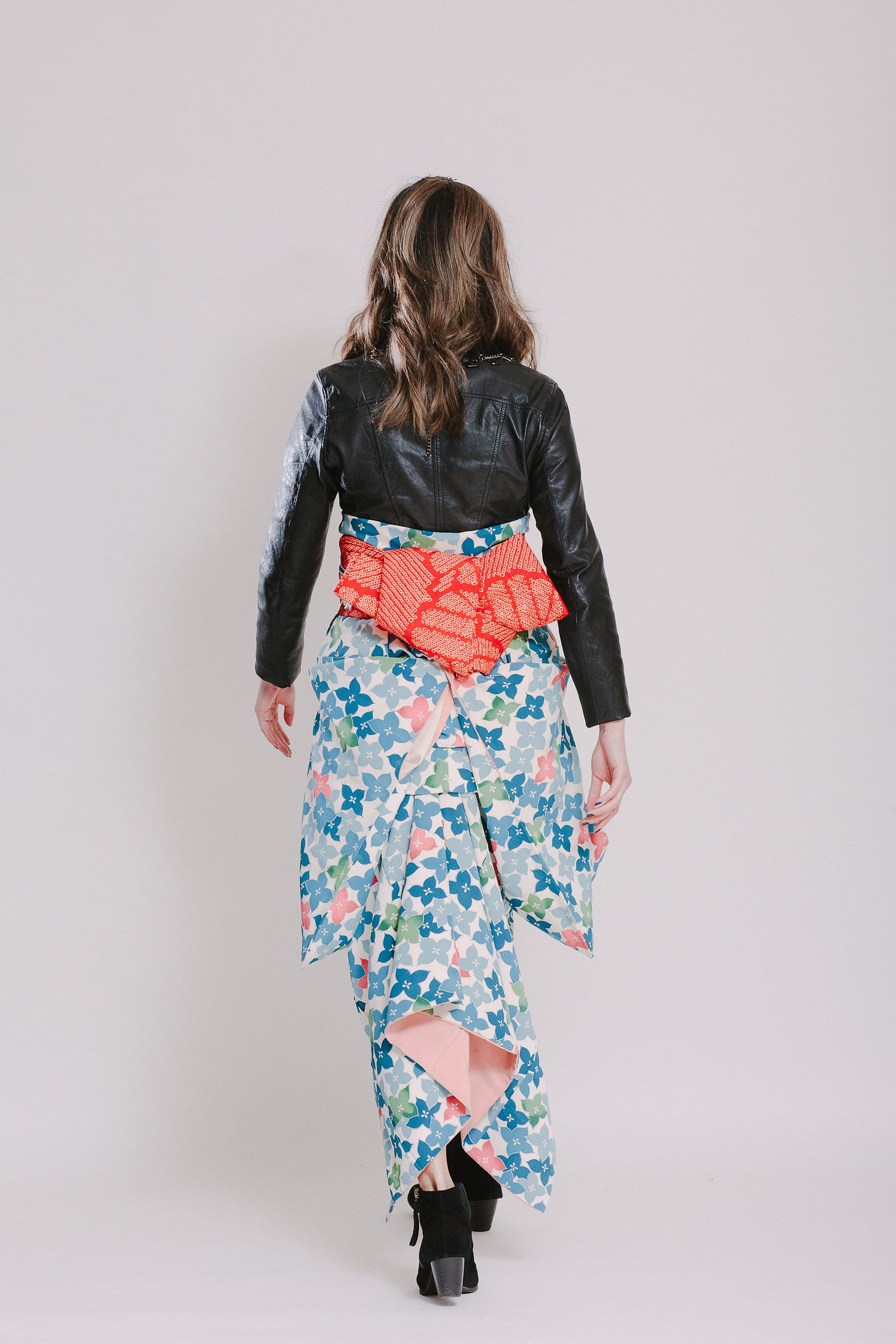


Absolutely lovely read Kimono Chronicles! I would like to know more about this talented lady Mira please.